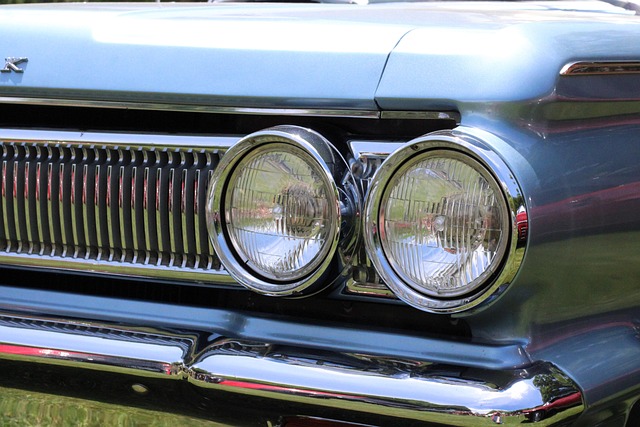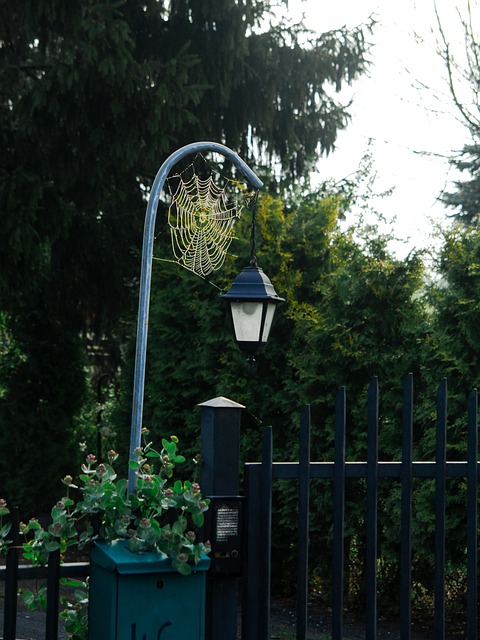Mastering Custom Color Matching: Training Staff for Industry Excellence
Custom color matching is a meticulous process vital for collision repair centers aiming to restore v…….
Welcome to an exploration of a fascinating aspect of color technology: custom color matching. This article aims to guide you through the intricate process, global impact, economic implications, technological innovations, regulatory frameworks, and future prospects that define this dynamic field. Custom color matching is more than just mixing paints or inks; it’s an art and science that empowers industries to create precise hues tailored to their unique needs. By the end of this journey, you’ll understand why this technique has become indispensable in various sectors, from fashion and design to manufacturing and branding.
Definition: Custom color matching is a process that involves accurately replicating or creating specific colors as requested by clients or designers. It goes beyond standard color charts and requires precise calculations, advanced technology, and a deep understanding of color theory to achieve desired outcomes.
Core Components:
Color Measurement: Accurate color measurement is the foundation. Technologies like spectrophotometry and colorimetry ensure consistent and repeatable results, enabling precise comparisons between samples.
Color Formulation: This step involves mixing pigments, dyes, or other colorants to create custom hues. It requires a deep knowledge of color theory and an ability to balance components for desired shades.
Quality Control: Rigorous quality control checks ensure the final product matches the original specification. This includes visual inspection and advanced instrumental analysis.
Historical Context: The practice has roots in ancient times when artists mixed pigments to create unique colors. However, modern custom color matching evolved with advancements in technology, particularly in the 20th century. The development of digital color management systems and spectrophotometers revolutionized the process, making it more efficient and precise.
Significance: Custom color matching is vital for industries where product aesthetics and brand identity are critical. It ensures consistency across products, enables unique design expressions, and fosters customer satisfaction through accurate representation of visual concepts.
Custom color matching has left an indelible mark on the global landscape, shaping industries and cultures alike. Its influence is evident in various sectors:
Fashion and Apparel: Designers worldwide rely on custom colors to create distinct collections, catering to diverse market preferences. Trends like sustainable fashion often drive unique hue choices, with brands embracing eco-friendly colorants.
Automotive Industry: Automakers use custom color matching for precise body paint, ensuring vehicles’ exterior hues align with brand image and customer expectations. Advanced color technology also enables rapid color changes in production lines.
Packaging and Graphics: In a competitive market, brands leverage unique colors to capture attention and enhance product perception. Custom matching ensures labels, boxes, and promotional materials accurately represent brand identities.
Regional Trends:
| Region | Key Trends |
|---|---|
| North America | Emphasis on eco-friendly colorants and digital printing for rapid color customization. |
| Europe | Strict environmental regulations drive the adoption of sustainable color solutions, with a focus on low-VOC (Volatile Organic Compound) paints. |
| Asia Pacific | Rapid growth in e-commerce fuels innovative packaging designs, requiring precise custom colors for product differentiation. |
| Middle East & Africa | Luxury brands showcase unique colors and patterns, reflecting cultural influences and opulence. |
The economic aspects of custom color matching are multifaceted, impacting various sectors:
Market Size: According to a 2022 report by MarketsandMarkets, the global colorants market, which encompasses custom color matching services, is projected to reach $216.5 billion by 2027, growing at a CAGR of 7.5%.
Investment Patterns: Industries investing heavily in custom color matching include automotive, coatings (paints and finishes), plastics, and textiles. These investments drive technological advancements and create specialized service providers.
Cost Analysis: Custom color creation involves variable costs related to raw materials, labor, and technology. Companies charge based on factors like complexity, quantity, and desired precision, making it a tailored service with varying price points.
Value Addition: For manufacturers, offering custom color matching services enhances product offerings, attracting niche markets, and fostering long-term customer relationships.
Technological innovations have propelled the capabilities of custom color matching, opening new frontiers:
Digital Color Management Systems (DCMS): These systems streamline color communication and reproduction across devices and platforms, ensuring consistent color representation. DCMS standards like ICC (International Color Consortium) profiles are widely adopted.
Spectrophotometers: Advanced spectrophotometry ensures precise color measurement by analyzing light reflected or transmitted through a sample. This technology is crucial for accurate color formulation and quality control.
3D Printing and Additive Manufacturing: 3D printing allows for the creation of intricate, custom color objects. By incorporating colored materials, manufacturers can produce prototypes or products with unique visual attributes.
Artificial Intelligence (AI): AI algorithms enhance color prediction and formulation by analyzing vast datasets of color trends, preferences, and historical usage. This technology improves efficiency and reduces development time.
Key policies and regulations govern custom color matching, ensuring consumer protection, environmental sustainability, and fair trade practices:
Environmental Regulations: Many countries have laws limiting hazardous substances in paints and inks, such as the European Union’s REACH (Registration, Evaluation, Authorization, and Restriction of Chemicals) regulation. These rules drive the development of safer, eco-friendly colorants.
Product Safety Standards: Organizations like ASTM International and ISO set safety standards for colorants used in various industries, ensuring product quality and consumer protection.
Intellectual Property Rights: Patents and trademarks protect unique color formulations and processes, encouraging innovation while providing legal safeguards for creators.
Trade Agreements: Bilateral and multilateral trade agreements often include provisions for technical standards and product certification, impacting the global trade of colored products.
Despite its many advantages, custom color matching faces challenges that require strategic solutions:
Color Consistency: Achieving consistent colors across different applications and platforms remains a challenge, especially in the digital realm. Standardization and robust quality control procedures are essential.
Sustainability Concerns: While efforts to adopt eco-friendly colorants are growing, some traditional pigments pose environmental challenges. Developing sustainable alternatives is an ongoing process.
Cost and Scalability: Custom color creation can be costly and time-consuming, especially for small batch sizes. Innovations in technology and business models are needed to make it more accessible.
Strategic Solutions:
A contemporary fashion brand embarked on a mission to create an eco-conscious clothing collection. They utilized custom color matching to develop a range of organic cotton garments with unique, nature-inspired hues. By partnering with specialized dyes and employing digital printing, they achieved vibrant, consistent colors while reducing water usage by 70% compared to traditional methods. This approach resonated with environmentally conscious consumers, boosting brand loyalty.
A leading automotive manufacturer introduced a revolutionary paint system for its electric vehicle (EV) models. Custom color matching played a pivotal role in creating dynamic exterior colors that changed with varying lighting conditions. This technology not only enhanced the EV’s aesthetic appeal but also reduced production time and costs by streamlining the painting process. The unique paint system became a signature feature, attracting tech-savvy buyers.
A global snack food company wanted to refresh its packaging design while maintaining brand recognition. Custom color matching allowed them to create a new palette that reflected modern tastes and cultural influences. By carefully selecting colors and applying them to innovative packaging materials, they achieved high product visibility on store shelves, increasing market share and consumer engagement.
The future of custom color matching is brimming with potential growth areas and emerging trends:
Personalized Experiences: With the rise of e-commerce and digital platforms, personalized color experiences will gain traction. Customers will have greater control over product customization, from clothing to home decor.
Virtual Reality (VR) and Augmented Reality (AR): VR and AR technologies will enable designers and consumers to visualize custom colors in immersive environments, enhancing decision-making and experience.
Sustainability Focus: The demand for sustainable color solutions will continue to grow as environmental concerns persist. Biodegradable pigments and eco-friendly production methods will be in the spotlight.
Advanced Materials: 3D printing and advanced materials will open new possibilities for creating complex, multi-colored structures with unique properties.
Custom color matching is more than a technical process; it’s a catalyst for innovation, creativity, and differentiation across industries. From fashion to automotive, packaging to art, the impact of this technique is undeniable. As technology continues to evolve, we can expect even more remarkable applications, pushing the boundaries of what’s possible in the world of color.
Q1: How does custom color matching differ from standard color mixing?
A: Custom color matching goes beyond mixing primary colors. It involves precise calculations, advanced technology, and expertise to create specific hues requested by clients. Standard color mixing typically follows established recipes for basic colors.
Q2: What role does digital technology play in modern custom color matching?
A: Digital technology revolutionizes the process through DCMS, enabling consistent color communication, efficient order management, and digital printing capabilities. It streamlines workflows and enhances precision.
Q3: Are there environmental concerns associated with custom color creation?
A: Yes, some traditional colorants have environmental impacts. However, growing trends focus on sustainable alternatives, eco-friendly production methods, and regulations that drive the industry towards greener practices.
Q4: Can custom colors be replicated across different media?
A: Absolutely! Custom colors can be accurately replicated across various media, including print, digital displays, packaging, textiles, and more. Advanced color management systems ensure consistency regardless of application.

Custom color matching is a meticulous process vital for collision repair centers aiming to restore v…….

Custom color matching is a sophisticated process in auto bodywork restoration, ensuring aesthetic pe…….

Custom color matching is a complex art combining artistic vision with scientific precision. Technici…….

Custom color matching tools are essential for auto glass repair and car body restoration, allowing p…….

Custom color matching, a blend of science and art, is crucial for vehicle body shops to achieve flaw…….

Custom color matching is a DIY auto repair skill for achieving flawless finishes by mixing paints to…….

Custom color matching, a specialized automotive service, offers car owners precise restoration of or…….